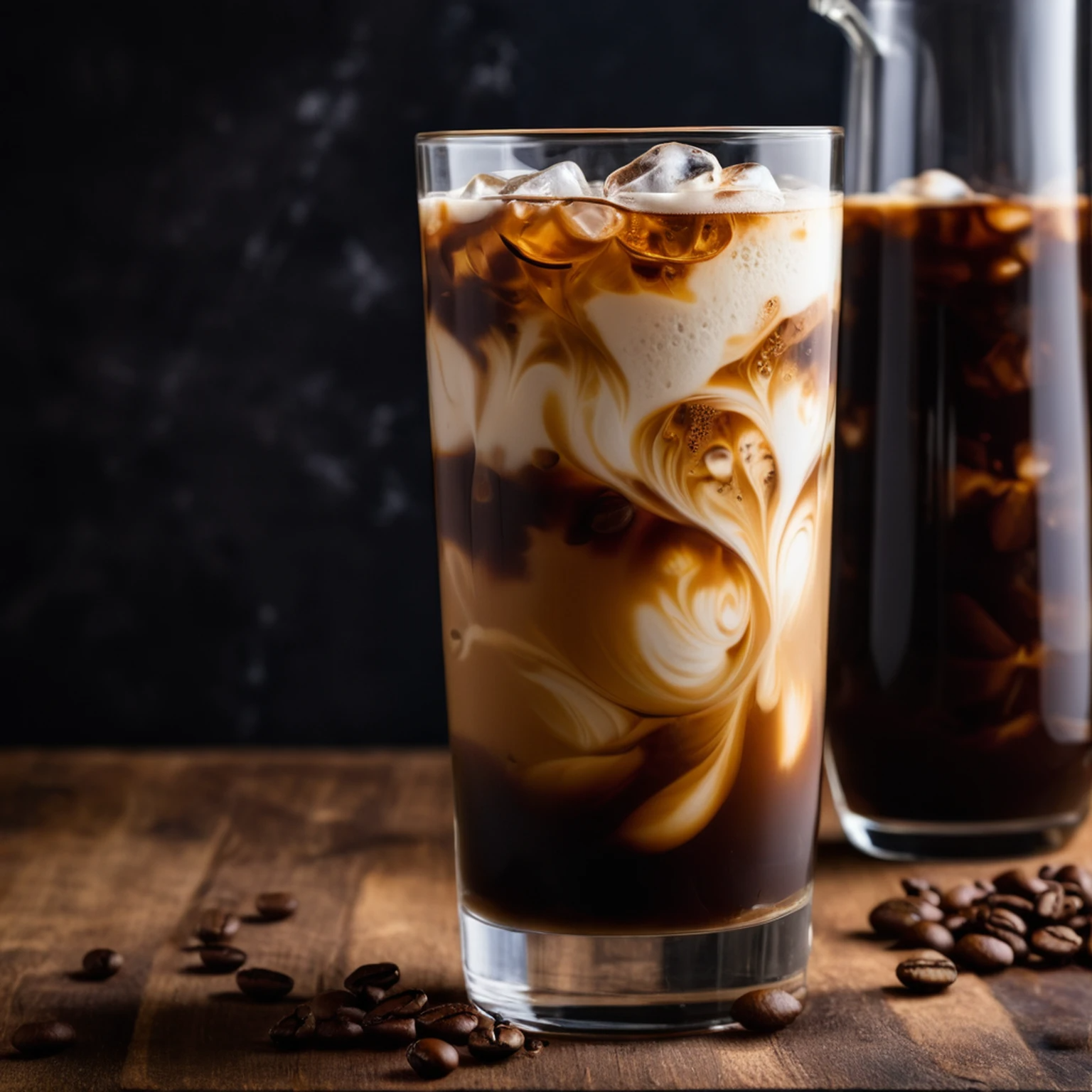What’s the difference between cold brew and iced coffee? Cold brew is made by steeping coarsely ground coffee in cold or room temperature water for a long period—typically 12 to 24 hours. No heat is used at all in this process. After steeping, the coffee is filtered, and the result is a concentrated beverage that can be diluted with water, milk, or any preferred mixer. Iced coffee, on the other hand, is made using hot brewing methods like a drip coffee maker, French press, or pour-over. After it’s brewed hot, it is chilled and served over ice. Sometimes, baristas will brew the coffee directly over ice (called flash-chilling) to help preserve its flavor.
Let's break it down:
Brewing Method
| Cold Brew | Iced Coffee |
|---|---|
| Made by steeping coarsely ground coffee in cold or room temperature water for 12–24 hours. | Brewed hot using traditional methods (drip, pour-over, etc.), then chilled and poured over ice. |
| No heat involved at any point. | Uses hot water to extract the coffee. |
| Typically uses a higher coffee-to-water ratio. | Uses regular coffee-to-water ratio for hot brewing. |
Flavor Profile
| Cold Brew | Iced Coffee |
|---|---|
| Smooth, mellow, less acidic and slightly sweet due to the cold extraction. | More acidic, sharper, and brighter flavors because hot water extracts more oils and acids. |
| Tends to be more rounded and chocolatey. | Tastes like your usual hot coffee but colder; bolder and more bitter. |
| Lacks some of the “brightness” or fruity notes you get from hot brewing. | Can retain more of the bean’s complex, nuanced flavors. |
Caffeine Content
| Cold Brew | Iced Coffee |
|---|---|
| Often higher in caffeine, especially in concentrate form. | Generally lower caffeine, unless made strong. |
| However, once diluted (with water or milk), caffeine can become comparable to iced coffee. | Depends on brew strength and bean type, but usually less caffeine per ounce. |
Serving Style
| Cold Brew | Iced Coffee |
|---|---|
| Served cold, often diluted with water or milk. | Brewed hot, then poured over ice, sometimes flash-chilled to avoid dilution. |
| Commonly pre-made in batches and stored in the fridge. | Usually made on demand or in smaller batches. |
| Often served black or with cold foam, sweet cream, or milk. | May be sweetened while still hot (to help dissolve sugar), then cooled. |
Shelf Life & Storage
| Cold Brew | Iced Coffee |
|---|---|
| Can be stored for up to a week in the fridge without major flavor loss. | Best consumed soon after brewing; flavor degrades quickly after chilling. |
Cost and Availability
| Cold Brew | Iced Coffee |
|---|---|
| Often more expensive in cafes due to long steeping time and higher coffee-to-water ratio. | Usually cheaper because it uses standard brewing methods. |
| Found bottled, canned, or on tap in many stores. | Typically made fresh to order in most cafes. |
Summary Table
| Feature | Cold Brew | Iced Coffee |
|---|---|---|
| Brew Temp | Cold / Room Temperature | Hot |
| Brew Time | 12–24 hours | Few minutes |
| Acidity | Low | High |
| Caffeine (per oz) | Often higher (especially undiluted) | Moderate |
| Flavor | Smooth, mild, less bitter | Bright, bold, more bitter |
| Storage | Lasts several days | Best fresh |
| Preparation | Made in advance | Brewed on the spot |
| Cost (at café) | More expensive | Less expensive |
Which Should You Choose?
Go for Cold Brew if:
You prefer smoother, less acidic coffee.
You want to prep coffee in bulk ahead of time.
You need a caffeine kick with less bitterness.
Go for Iced Coffee if:
You enjoy bright, bold coffee flavors.
You want a quick, cold coffee without waiting 12 hours.
You don’t mind a little more acidity and bitterness.
